Hidden Costs in Steel Coil Packaging and How to Avoid Them
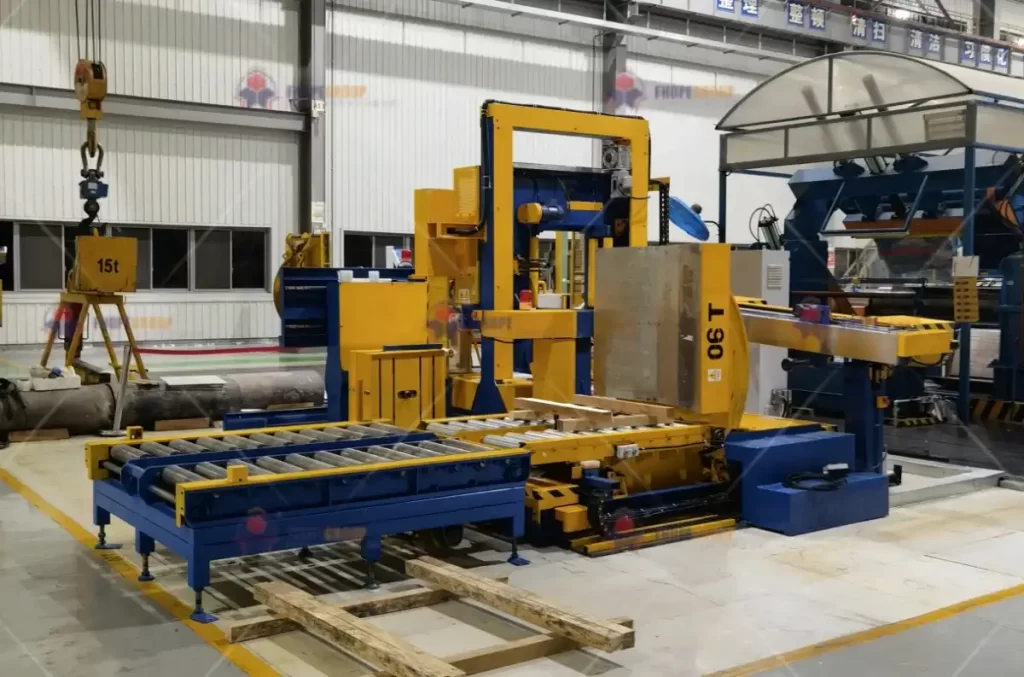
Steel coil packaging is a critical process in industries ranging from construction to automotive manufacturing. While businesses often budget for the visible costs of packaging machinery and materials, numerous hidden costs can significantly impact profitability if overlooked. These unanticipated expenses, stemming from inefficiencies, damages, or waste, can accumulate over time. Fortunately, understanding these hidden costs and implementing proactive strategies can lead to substantial savings and operational improvements. This article explores common hidden costs in steel coil packaging and provides actionable solutions to mitigate them effectively.
1. Inefficient Packaging Processes
One of the most significant hidden costs lies in inefficient packaging workflows. Reliance on outdated equipment or poorly optimized manual processes can drastically slow down production lines. This inefficiency translates directly into:
- Longer lead times.
- Increased labor hours per coil.
- Production bottlenecks delaying shipments.
- Reduced overall throughput.
If your packaging line isn't optimized for speed, accuracy, and flow, you are likely incurring unnecessary expenses daily.
How to Avoid This:
- Invest in Automation: Modern automated packaging systems, featuring capabilities like automatic coil wrapping and strapping, dramatically increase speed and consistency while reducing manual intervention.
- Optimize Layout: Analyze your current workflow. Implement principles of lean manufacturing to eliminate unnecessary steps, reduce movement, and streamline the process from start to finish.
- Regular Process Audits: Periodically review your packaging operations to identify emerging bottlenecks or areas for improvement.
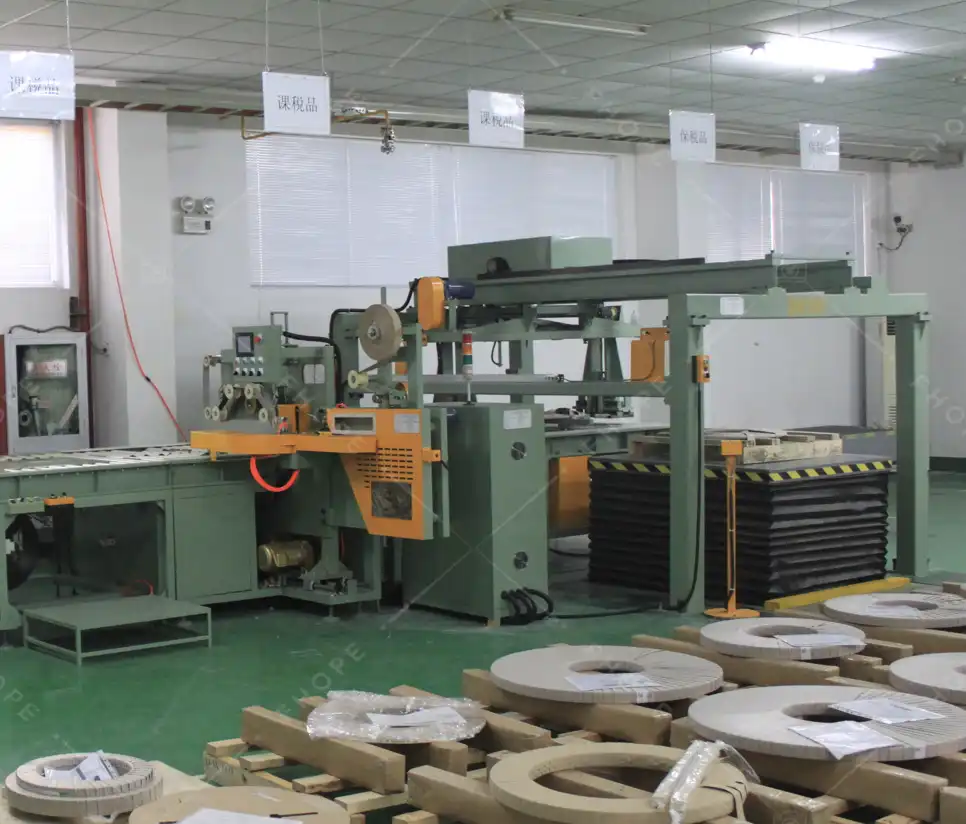
steel coil packing line(1) 2. Inflated Labor Costs
Manual packaging operations inherently require a larger workforce. Beyond direct wages, labor costs encompass:
- Overtime pay during peak periods.
- Costs associated with employee turnover (recruitment, training).
- Expenses for ongoing training and skill development.
- Higher potential for human error leading to rework or product damage.
The more manual handling involved, the greater the risk of inconsistencies and associated costs.
How to Avoid This:
- Embrace Automation: Transitioning to automated or semi-automated packaging systems allows fewer operators to manage higher throughput. This directly reduces labor costs and minimizes the risk of errors.
- Improve Ergonomics: For remaining manual tasks, ensure workstations are ergonomically designed to reduce strain and improve efficiency.
- Cross-Training: Train employees on multiple tasks within the packaging line to provide flexibility and cover absences without disrupting workflow.
3. Coil Damage During Handling and Transit
Damage to steel coils during packaging, handling, or transportation represents a substantial hidden cost. Improperly secured or inadequately protected coils can suffer from:
- Dents and scratches affecting surface quality.
- Edge damage impacting usability.
- Shifting during transit, potentially leading to significant losses.
- Customer rejection, returns, and reputational damage.
How to Avoid This:
- Use Quality Protective Materials: Invest in robust protective packaging materials, such as durable VCI stretch film, edge protectors, and appropriate wraps tailored to the coil's specifications.
- Ensure Secure Packaging: Utilize packaging systems that provide consistent and secure wrapping and strapping. Automated systems often offer superior tension control compared to manual methods, preventing load shifting.
- Proper Handling Procedures: Train staff on correct lifting and handling techniques for packaged coils to minimize accidental damage within the facility.
4. Excessive Packaging Material Usage
Using more packaging material than necessary is a common, yet often unnoticed, source of waste and increased cost. This frequently results from:
- Poorly calibrated machinery.
- Lack of standardized wrapping procedures in manual operations.
- Using overly thick or wide materials where lighter options would suffice.
Excess material use not only inflates costs but also contributes negatively to environmental waste and sustainability metrics.
How to Avoid This:
- Optimize Machine Settings: Calibrate automated wrapping and strapping machines to dispense the precise amount of material needed for secure packaging without excess.
- Material Selection: Evaluate different types and grades of packaging materials. Sometimes a thinner gauge, high-performance film can provide equal or better protection at a lower cost and reduced volume.
- Standardize Processes: Implement clear, standardized operating procedures for manual or semi-automated packaging steps to ensure consistency and minimize overuse.
- Explore Recyclable Options: Consider using recyclable materials that align with cost-efficiency and environmental goals.
5. Unplanned Equipment Downtime
Unscheduled downtime due to machinery breakdowns or emergency maintenance is one of the most disruptive and expensive hidden costs. Production halts lead to:
- Lost productivity and missed output targets.
- Delayed shipments and potential contractual penalties.
- Idle labor costs.
- Expensive emergency repair costs (parts, technician fees).
How to Avoid This:
- Implement Preventive Maintenance: Establish a rigorous preventive maintenance program involving regular inspections, lubrication, and replacement of wear parts before they fail.
- Invest in Reliable Machinery: Choose high-quality packaging equipment known for durability and reliability. Consider machines with built-in diagnostics that provide early warnings of potential issues.
- Maintain Spare Parts Inventory: Keep critical spare parts on hand to expedite repairs and minimize downtime duration.
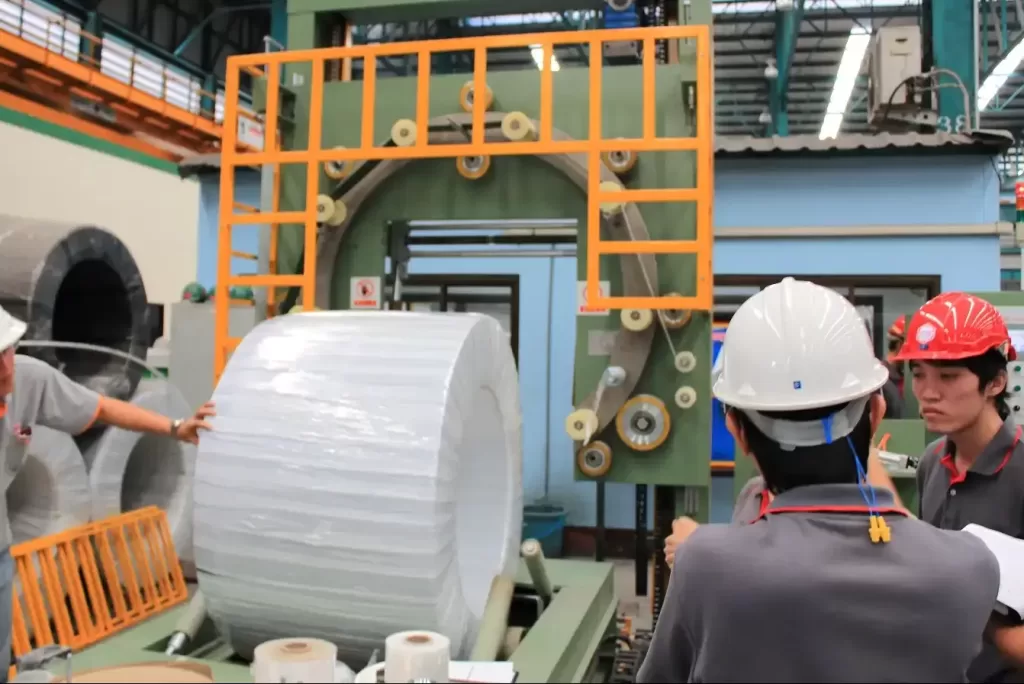
steel wire wrapping machine2 6. Overlooking Energy Consumption
The energy costs associated with operating steel coil packaging lines can be substantial, especially with older or inefficient machinery. Continuous operation, motors, heaters, and pneumatic systems all contribute to electricity usage. These costs often fly under the radar but accumulate significantly over time.
How to Avoid This:
- Choose Energy-Efficient Equipment: When upgrading or purchasing new machinery, prioritize models designed for energy efficiency. Look for features like variable speed drives, energy-saving modes during idle periods, and efficient heating elements.
- Regular Energy Audits: Monitor the energy consumption of your packaging line. Identify specific machines or processes that are major energy consumers and explore ways to optimize their usage.
- Proper Maintenance: Well-maintained equipment generally operates more efficiently, consuming less energy than poorly maintained machines.
7. Lack of Proper Operator Training
Insufficient training for personnel operating or maintaining packaging equipment can lead to a cascade of hidden costs:
- Costly operational errors resulting in damaged products or packaging failures.
- Improper machine use leading to premature wear or breakdowns.
- Safety incidents resulting in injuries, downtime, and potential liabilities.
- Inefficient operation reducing overall throughput.
How to Avoid This:
- Comprehensive Training Programs: Develop and implement thorough training programs covering machine operation, safety protocols, basic troubleshooting, and routine maintenance tasks.
- Refresher Courses: Conduct periodic refresher training to reinforce best practices and introduce new procedures or features.
- Standard Operating Procedures (SOPs): Provide clear, accessible SOPs for all packaging tasks.
- Manufacturer Training: Utilize training resources provided by the equipment manufacturer.
8. Underestimating the Importance of Packaging Design
The way a steel coil is packaged (the "packaging design") impacts more than just protection. Poor design choices can lead to:
- Inefficient space utilization: Bulky or awkward packaging increases storage space requirements and can lead to partially filled trucks, raising shipping costs.
- Difficult handling: Poorly designed packages can be harder to handle, increasing labor time and risk of damage.
- Inadequate protection: Design flaws might leave coils vulnerable despite using sufficient material.
How to Avoid This:
- Optimize for Density: Design packaging solutions that maximize protection while minimizing overall volume. This improves storage efficiency and transportation density (packaging design optimization).
- Consider the Entire Logistics Chain: Design packaging with handling, storage, and transportation methods in mind. Ensure compatibility with forklifts, cranes, and racking systems.
- Customization: Where feasible, use customized packaging tailored to specific coil dimensions for a snug, secure fit that minimizes wasted space and material.
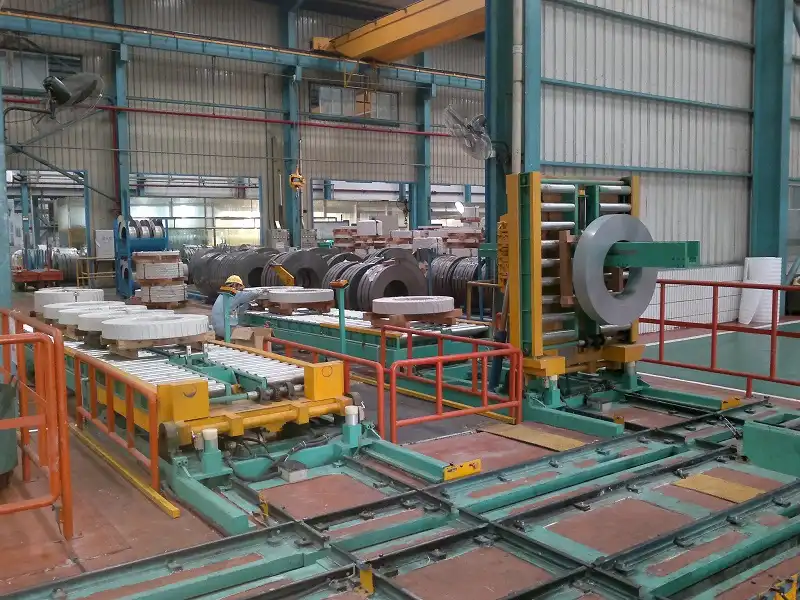
steel coil packaging line in vertial handling (2) 9. Compliance and Regulatory Fines
Industries using steel coils often face regulations regarding packaging, transport, safety, and environmental impact. Non-compliance can result in:
- Significant fines and penalties.
- Forced operational changes or shutdowns.
- Legal fees.
- Damage to company reputation.
- Product recalls if packaging fails safety standards.
How to Avoid This:
- Stay Informed: Keep up-to-date with relevant local, national, and international regulatory compliance requirements for packaging and transportation of steel products.
- Ensure Compliant Materials and Processes: Verify that your packaging materials (e.g., wood pallets meeting ISPM 15) and processes adhere to all applicable standards.
- Invest in Compliant Equipment: Select packaging machinery designed to meet current safety and operational standards.
10. Failing to Plan for Long-Term Scalability
Choosing a packaging system that only meets current needs without considering future growth is a common oversight. As business volume increases, an inadequate system can become a major bottleneck, necessitating costly, disruptive upgrades or complete replacement. This lack of foresight represents a significant potential hidden cost.
How to Avoid This:
- Select Scalable Solutions: Opt for scalable packaging solutions. Look for modular equipment that can be easily expanded or upgraded to handle increased capacity or different coil sizes in the future.
- Consider Flexibility: Choose systems that offer flexibility in terms of coil dimensions, packaging materials, and wrapping patterns.
- Long-Term Planning: Factor projected business growth into your initial equipment selection process. Discuss scalability options with potential suppliers.
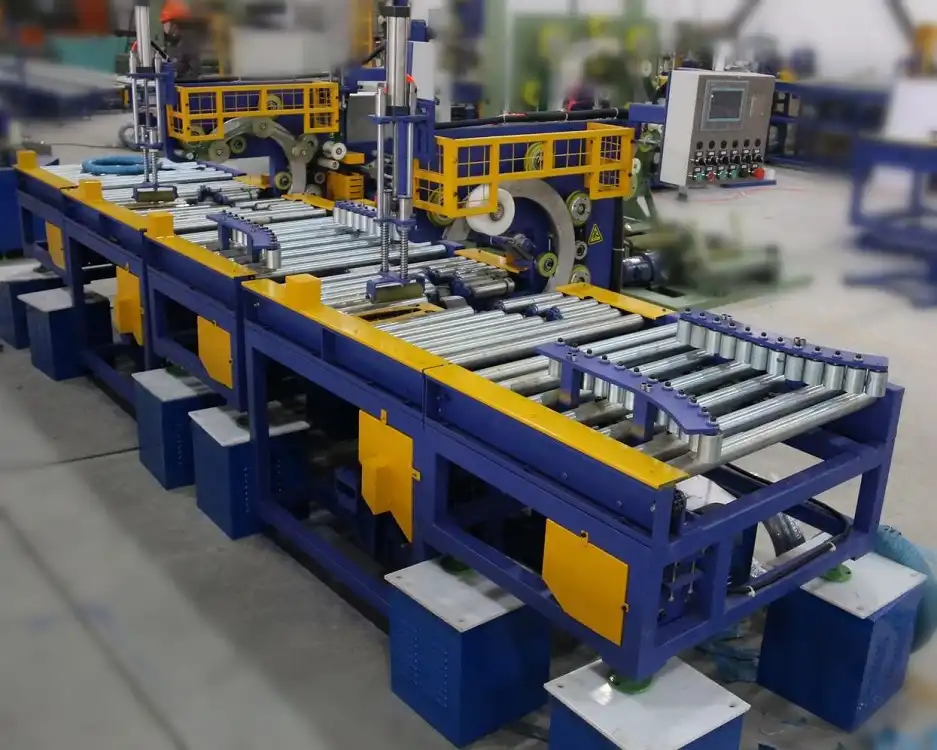
steel wire coil packing machine Conclusion
Identifying and addressing the hidden costs in steel coil packaging is crucial for maintaining operational efficiency and protecting your bottom line. Inefficiencies, labor expenses, product damage, material waste, downtime, energy use, inadequate training, poor design, non-compliance, and lack of scalability can all silently erode profits.
By focusing on process optimization, investing strategically in packaging automation and reliable equipment, ensuring thorough training, prioritizing protective packaging, and planning for future needs, businesses can transform these hidden liabilities into opportunities for savings and improved performance. Proactive management of your steel coil packaging operation is key to long-term cost-effectiveness and success.